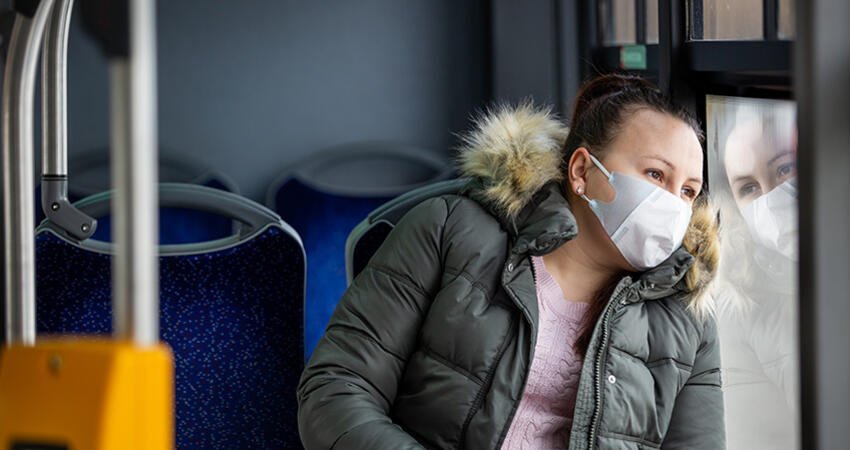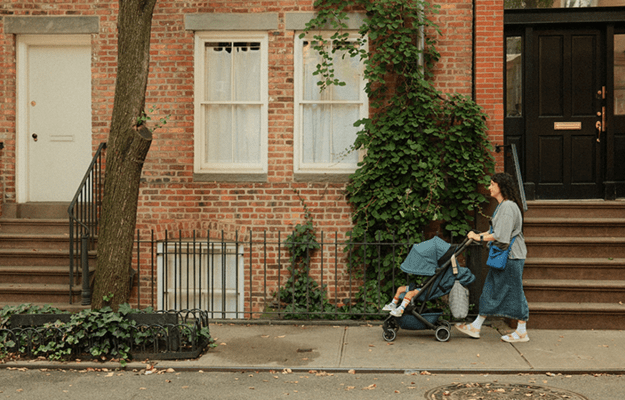
Are Cars a Necessity? During COVID-19, Low-Income Households May Consider Public Transit Alternatives
Low-income households and communities of color (PDF) are disproportionately affected by the pandemic. Already burdened with limited access to public spaces, affordable housing, sufficient health care, fair-wage jobs, and wealth-building opportunities, they face potential income loss while trying to maintain stable housing. More than half of low-income households (PDF) reported household wage loss because of the pandemic, and with the unemployment rate hitting a high of 14.7 percent in April 2020, more households could fall into financial distress. For low-wage workers who are currently employed (and are less likely to be able to work from home), they must figure out how to commute to and from work safely and affordably.
Public transportation use has dropped dramatically since the beginning of the pandemic. Ridership is down as much as 95 percent, buses aren’t charging fare so riders can avoid interacting with the drivers, and transit agencies are paying millions to continually sanitize trains and buses while slashing transit service. The costs of lost fares and sanitizing procedures along with likely reductions in government support (PDF) because of reduced tax revenues portends a challenging future for transit agencies. Caltrain, the state of California’s regional rail system, is in danger of being shut down. Bay Area Rapid Transit is facing a $975 million shortfall. And the $25 billion given to transit agencies from the Coronavirus Aid, Recovery, and Economic Security Act in May was just a short-term measure—the need goes far beyond the financial commitments that have been made.
Many low-income renters live in affordable housing that is not located near quality, accessible transit. They often rely on public transportation to get to and from work, family, grocery stores, and doctors. And people of color who are low-income and are disproportionately represented in essential work sectors have a higher risk of contracting or dying from COVID-19. They are also more likely to take public transportation than higher-income white people. The cuts in transit services have left people with a challenging choice: take public transit with reduced schedules and packed trains and buses that could increase exposure to COVID-19 or find another way to get around.
This decision is pushing people to consider purchasing a car. A car can help with personal mobility and eliminates the dependence on transit schedules. However, car ownership can be prohibitively expensive, especially for people who are living on fixed incomes and have to commute longer distances as they are pushed out to the suburbs. Households in need—predominantly Black and Latinx households or those with low incomes—may not have the extra income required for a down payment, especially when they are given higher interest rates because of higher perceived lending risk.
Chicago’s Roseland neighborhood highlights the impact of transportation inequity
Chicago has stark neighborhood-level differences in income and race, and the wealth gap (PDF) limits households’ access to amenities and the benefits of public investment. The Roseland community area in the South Side of Chicago provides a good case for understanding how predominantly Black, lower-income neighborhoods weigh their transportation options. With more than 95 percent of the neighborhood being African American (PDF), Roseland has one of the lowest median incomes in the city (PDF). The community also had an unemployment rate of 22.4 percent (PDF)—nearly three times higher than the city of Chicago and nearly four times higher than the overall metropolitan region. Residents in Roseland are also twice as likely (PDF) to take public transit as their primary mode of travel to work compared with the region, and with the drop in public transit service because of the pandemic, residents are increasingly having to look to other transportation options, such as a car.
According to Experian, the average monthly payment for a used car in 2018 was $372. That constitutes nearly 10 percent of the median household income in Roseland. Car insurance rates are higher in many zip codes with large Black and Latinx populations because the perception of crime increases the costs of owning a car for many essential workers in need. Additionally, among Chicago residents who own cars, Black and Latinx people have the most accumulated debt from unpaid tickets. This debt further drives households into poverty and increases their risk of being behind on other critical payments. The bankruptcy filing from car expenses can be the catalyst for evictions and foreclosures, particularly for people of color.
The Roseland community is indicative of many communities hit hard by the coronavirus. A plurality of its residents rely on public transit at a time when service is being cut back because of tightening budgets. These circumstances potentially warrant the purchase of the car, but that decision has its own financial burdens. How can residents get to jobs, health care, and other amenities if they potentially have to face a choice between taking a reduced-service public transit system and committing a significant amount of their income to purchasing a car?
Considerations for transportation policymakers and advocates
For communities who are predominately Black and have low-incomes, local policymakers have an important role in alleviating their transportation costs. Free or reduced fare on public transportation has been touted an immediate recovery solution, but this could slow down the public-transit sector’s ability to get itself back on solid financial footing. Nevertheless, advocates and policymakers can consider the following strategies to improve transportation equity in the longer-term as families strive for financial resilience:
- Government subsidies can cushion the cost of travel for commuters. Employers could consider providing financial incentives for transportation modes outside of cars and public transit (such as dockless bikes and scooters and ridesharing services). Having multiple modes can provide families in communities with a wide range of opportunities to move around. However, those incentives will not be effective if the safety barriers to active transportation that pedestrians and bikers regularly face are not addressed. The tightening of rules could encourage more people to walk and bike because they feel safe.
- Policymakers can and should listen to and act on the needs of low-income residents who use transit as their primary mode of commuting. This includes keeping bus routes open based on need, inviting feedback from transit-dependent riders on what services they want, and maintaining or even expanding paratransit service.
Buying a car to weather the uncertainty of public transit operation during COVID-19 is not a viable solution for many households, as it may leave them in a worse financial position than where they were before the pandemic. Financially vulnerable households already face the disparate impacts of COVID-19 on their housing stability and job certainty; adding transportation to that list increases that burden. All levels of government and transportation advocates need to come together to think strategically about potential solutions that do not perpetuate inequities for people of color or drive low-income households into an even more financially precarious situation, where they could risk losing their home.
Photo by Simon Kadula/Shutterstock


